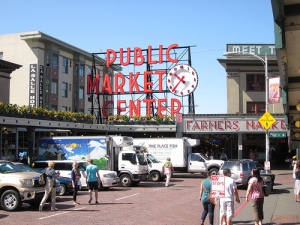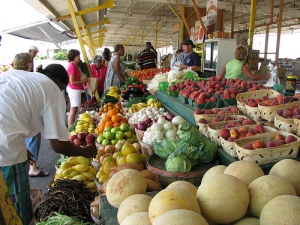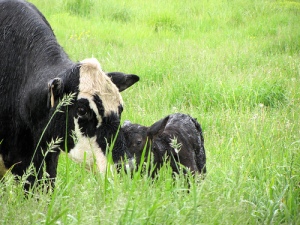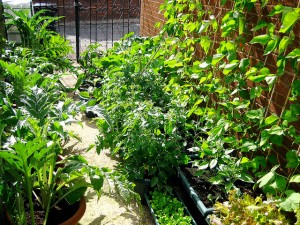Like an ember glows bright red when blown upon, my son’s skin reddens in response to chemicals. His nose runs, his eyes become glassy, and his breathing labored. As if someone had slipped speed into his drink, his mind races and so does his body. This has been my son’s reaction to substances like fragrance, cleaning chemicals, and car exhaust since he was just a baby.
About a year and a half ago, we were forced to remove our boy, then 12, from public school. The state of his health had reached crisis level. Weepy, bloody, septic eczema plagued him day and night. Asthma left him breathless. He cried nearly every evening when we insisted he go to school the next day.
Public school, far from being a place of safety, can be one of the most dangerous places a chemically sensitive child goes. Things like regular fumigation for pests, application of lawn chemicals, use of strong cleaning chemicals and air fresheners in classrooms, and even kids who come to school with heavy fragrance hanging about them from fabric softener, deodorant, hair products, and cologne all contribute to the creation of a very toxic environment. No child should be subjected to these things. But for a chemically sensitive child, school is very often a nightmare beyond anything most of us can imagine.
I never wanted any of my kids in school. But for my middle son especially, it felt wrong. It was like trying to pound him into a wrongly shaped container. It made him sore, out of sorts, and very sick. That’s why I was so relieved when my health finally improved enough to pull him back out. Just in time, too. I’m not sure he could have taken much more.
At first I didn’t even know how to begin to clean up the emotional and physical mess school had made of my son. We talked and talked. I put him in soothing baths of clay and Epsom salts. I gave him things to help his body heal and detoxify. I tried to teach him how to relax and think positively. But he remained fearful, depressed and exhausted until he saw the doctor, who informed him that he was not, in fact, dying. From that moment forward he began to rally. Although his rash had slowly been healing up until that time, he now made rapid progress in spite of the fact that we used almost none of the medicine prescribed for him, dramatically demonstrating that doctors can act as powerfully healing placebos.
My son’s travails must have begun in my womb. When I was pregnant, our home was brand-new and smelled like it too. It was making me sick. Imagine what it was doing to my tiny baby, developing in that chemical soup.
“We know the developing fetus is one of the most vulnerable populations, if not the most vulnerable, to environmental exposure,” said Anila Jacobs, EWG senior scientist. “Their organ systems aren’t mature and their detox methods are not in place, so cord blood gives us a good picture of exposure during this most vulnerable time of life.” –Scientific American, Tests Find More Than 200 Chemicals in Newborn Umbilical Cord Blood
Three months after my son was born, he developed his first rash, a little patch on his cheek. No big deal, right? Soon, a pustule formed near the red patch which broke and gave rise to more pustules until his entire face was covered in weepy impetigo.
The antibiotics seemed to clear the rash right up. Or had they? Just as we began giving my son his medicine, we left for a vacation on the Olympic Peninsula. As the rash cleared, I assumed the pink liquid was doing its job. By the time we arrived home, not only was the infection gone, but so was the rash. It was the first and last time for many years that the poor boy would have clear skin.
A day after our return, the rash reappeared, and for the first time it began to dawn on me that home might be the problem. Not only did we live in a brand-new house still off-gassing toxic chemicals, but also in a dirty, dusty agricultural valley, reeking of cow manure and drenched in pesticides.
On our trip, we had breathed some of the cleanest air available on planet earth, air that was continually scrubbed by frequent rain, rich in oxygen, and infused with calming ocean salt. I believed then, and still believe now, that it was the air that healed my son’s rash, not the antibiotics. From that time forward, I would continuously look for ways to move our family to cleaner air.
Why Living Near the Ocean is Beneficial to Your Health, Natural Health Ezine
The cure for anything is salt water: sweat, tears, or the sea.
– Isak Dinesen
My son finally has clear skin. We have not moved out of our home, but most of the chemicals seem to have moved out of it. We still live in the dirty, dusty valley. But the combined effects of pulling the boy out of school, plus our efforts to use only non-toxic products, to feed our kids healthy, clean foods, and to keep the air in our home clean and free of most chemicals seems to have finally made a difference.
What a novel and wonderful thing it would be to live in a world where keeping our kids safe and healthy is easy, where chemical toxicants in common products are unheard of and all children are safe.









